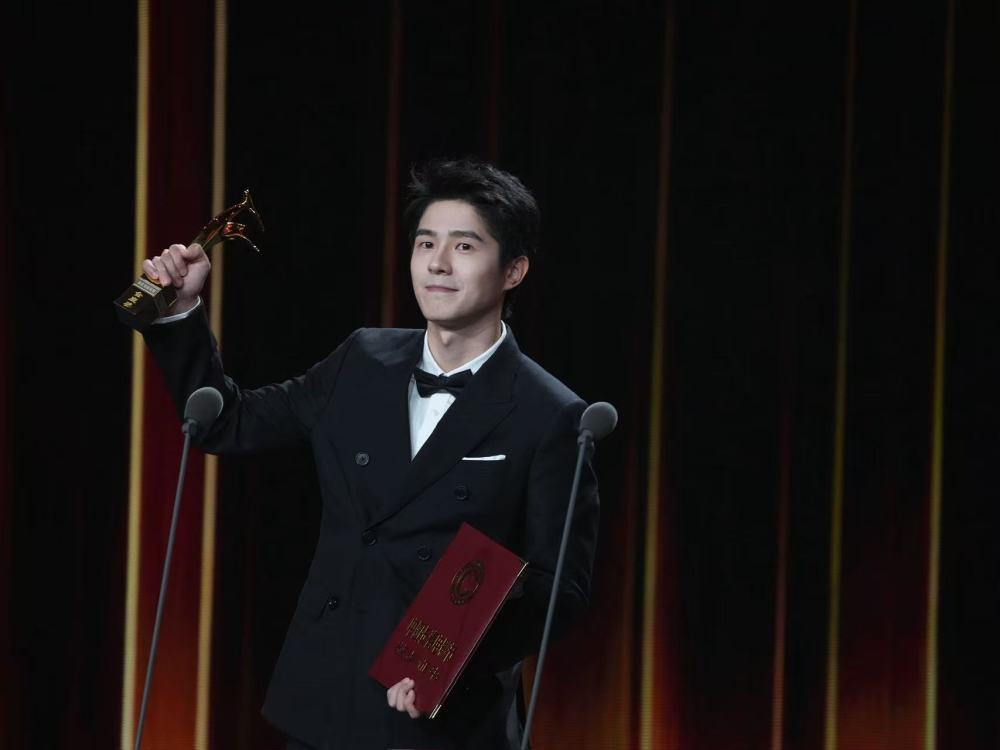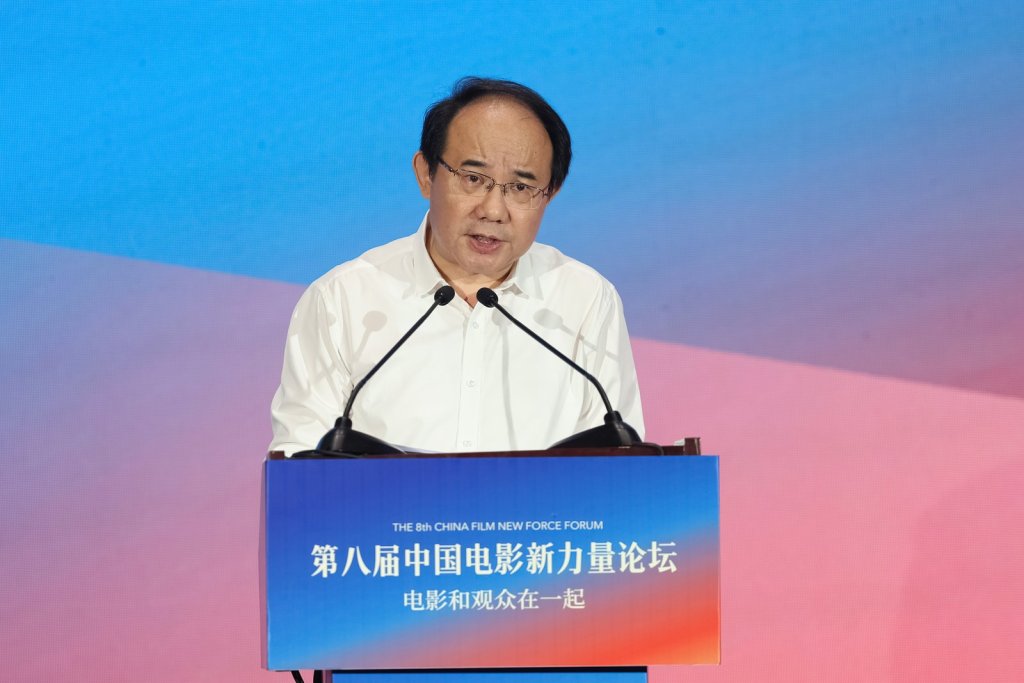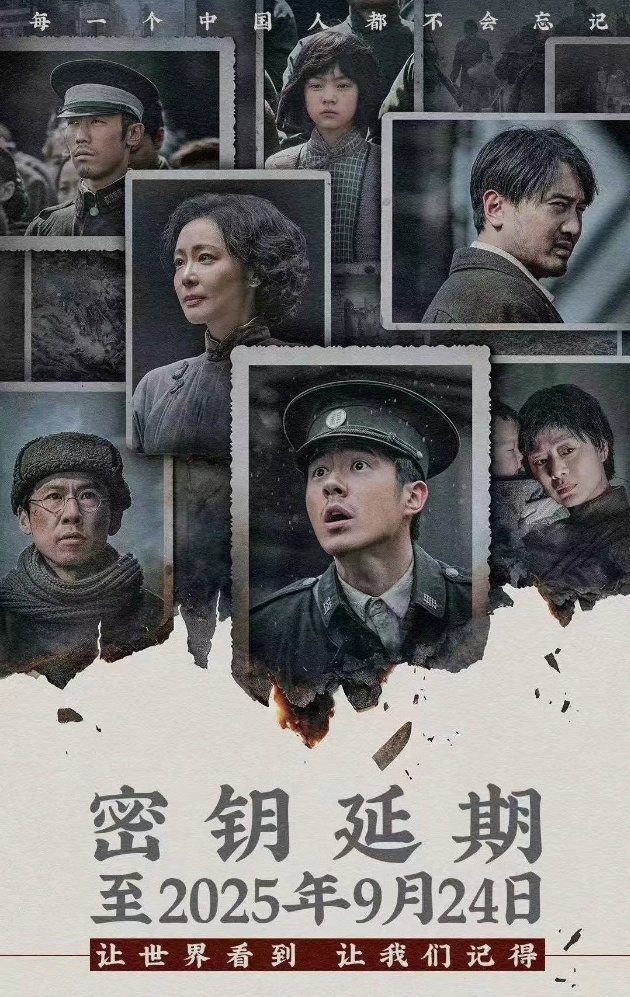
In the movie "Nanjing Photo Studio", a group of ordinary people risked their lives to preserve evidence of Japanese crimes and protect the truth in the simplest way. The film restores the tragedy and tenacity of Nanjing in 1937, and reflects the blood and dignity of the entire nation through the stories of small people. On July 23, the film's creators were interviewed and shared their thoughts and emotions behind the creation - from the postman Achang's "1213" number, to the family portrait of "Great Rivers and Mountains", to the yellowed lead type of the "Xinhua Daily", every detail is a deep look back at history.
Use "photos" to interpret the stories behind the characters
In Nanjing Photo Studio, Liu Haoran plays the postman Achang, with the number "1213" on his chest that is particularly eye-catching - this number is exactly the day Nanjing fell on December 13, 1937. "Achang is not just a character, he is a microcosm of thousands of Chinese people." Liu Haoran said when interpreting the role. From an ordinary person who only wanted to protect himself at the beginning, to a warrior who risked his life to pass on evidence of the Japanese army's crimes, Achang's transformation is just like the awakening of countless Chinese people in that era. The number sewn on the uniform has become one of the most touching details in the whole movie.
Wang Xiao plays the role of Lao Jin, the owner of a photo studio. He speaks authentic Nanjing dialect and runs a small photo studio on Gongyuan Street, witnessing the joys and sorrows of the people on this street. As a native of Nanjing, Wang Xiao has a special understanding of this role: "Lao Jin's love for photography is actually his love for this city." The photos in the photo studio record the appearance of this city and era.
When Nanjing actor Zhou You talked about this period of history, his eyes were deep and calm. The stories his father told were like a seed, buried deep in his childhood memories. As time went by, this seed continued to grow in his heart - from a child who simply listened to the story at first, to a young man who learned to think rationally, to an actor who stands in front of the camera today to interpret this period of history. Zhou You hopes that through his own interpretation, more people will understand this period of history that should not be forgotten, so that this heavy memory can be passed on.
Gao Ye saw her own reflection in the character Yuxiu. "She is like a mirror image of every one of us who pursues our dreams," Gao Ye said emotionally, "She loves beauty, is strong-willed, a little vain, but never ambivalent about right and wrong." She paused and said, "If it weren't for that atrocity, she could have continued to shine on the stage like me, even if she only played small roles, she would have been happy. This makes me know how to cherish the current creative opportunities."
In the film, there is a family portrait scene that brought countless viewers to tears. Lao Jin slowly turned the background curtain, and landmarks of the motherland such as the Forbidden City in Beijing, the Orioles Singing in the Willows in Hangzhou, the Yellow Crane Tower in Wuhan, and the Great Wall flashed one by one. Refugees from all over the world read out these familiar names in their own dialects. In the end, the little girl's crisp cry of "This is a great country" made countless viewers cry instantly. Director Shen Ao noticed that his fellow actor Xiao Yang was staring out the window intently on a flight. "What are you looking at?" "Looking at the great country." Looking down at the scenery outside the window, Shen Ao felt that the Chinese scenery could be called "great country."
Shen Ao said that during the filming of the movie, the scenes of Nanjing city under the hail of bullets at that time were highly restored in detail, from street landmarks to slogans on wall tiles. After experiencing the city up close, he had a different feeling about Nanjing. After getting off the plane, he strolled through the streets of Nanjing. The sun was shining all the way, with high-rise buildings lined up one after another and bustling crowds. He believed that the peaceful and harmonious scene before his eyes was the best ending for the movie.
The people in the photo studio are a microcosm of all Chinese people
In 1937, amid the raging gunfire in Nanjing, Jixiang Photo Studio became the most moving microcosm of China in the turbulent times. This small place brought together Chinese people from all over the world: Wang Guanghai, the translator played by Wang Chuanjun, spoke authentic Shanghainese; Gao Ye played Yuxiu, an actress from Changzhou, whose Wu dialect was tinged with opera rhymes; Wang Xiao played the owner of the photo studio, Lao Jin, whose pure Nanjing dialect was full of street wisdom; and Liu Haoran played the postman Achang, whose strong northern accent was resounding.
"Nanjing at that time was not only the Nanjing of Nanjing people, but also the Nanjing of all Chinese people," Liu Haoran said affectionately in the interview, "When the city fell, it gathered compatriots from all over the world, and they jointly wrote this tragic history." At the climax of the film, Achang faced the Japanese commander Ito and used up his last strength to shout out the names of Nanjing places: "Jiaofuying! Yuhuatai! Yijiangmen! Zhongshanmen! Zhonghuamen!... We Chinese will not allow you to destroy it like this!" These shouts are not only personal resistance, but also the roar and echo of the entire nation.
Gao Ye was particularly moved when talking about the experience of acting in Changzhou dialect: Jiangsu dialects vary greatly. Although we speak different dialects, we are all Chinese. When facing atrocities, all Chinese people can communicate with each other, unite as one, and make the right decision. Wang Chuanjun drew strength from this history: "It makes me more convinced that this land and the people on it have the most tenacious roots."
In the eyes of director Shen Ao, the photo studio is a miniature of Nanjing. The name "Jixiang" carries the ordinary and moving atmosphere of fireworks, which is the simple wish of thousands of families for peace and success. It has witnessed countless beautiful moments of daily life in Nanjing before the war. The violent intrusion of the Japanese army destroyed and swallowed up all the past. Shen Ao believes that the transformation of these little people in the film from simply wanting to survive to wanting more people to survive reflects the essential spirit of the Chinese people, which is the most profound thing in the bones of the Chinese people.
The main creators were presented with a copy of the Xinhua Daily, which exposed the atrocities committed by the Japanese army in 1938
There is a key scene in the film that is unforgettable: the crowd gathered together with bated breath, staring at the shocking headline in the "New China Daily" in 1938 - "Japanese invaders brutally massacred tens of thousands of soldiers and civilians in Nanjing". The accompanying photos of the Japanese army's atrocities stung the hearts of every viewer.
This historical resonance on and off the screen has continued in a more profound way. At the media interview site, Wu Yuhan, a researcher at the Newspaper History Museum of Xinhua Daily, solemnly presented three precious newspaper copies to the creative team of Nanjing Photo Studio: the front page and second page of March 9, 1938, and the fourth page of March 11. These yellowed pages solidify the most painful memories of the Chinese nation.
"These newspapers are witnesses of history," Wu Yuhan said, pointing to the lead type on the newspaper. According to statistics, between January and May 1938, the Xinhua Daily published more than 10 reports on the atrocities committed by the Japanese army in Nanjing, revealing the truth of the Nanjing Massacre to the world. Among them, on January 23, 1938, the Xinhua Daily reported on the Nanjing Massacre under the title "The Terrifying City of Nanjing"; on January 25, it published another article titled "The Killing Contest at Purple Mountain in Nanjing", exposing the heinous killing contest of the Japanese army and disclosing the infamous "Hundred-Man Killing"...
Wu Yuhan said that the newspaper layout that appeared in the film was based on the front page headline of the Xinhua Daily on March 9 and the second page "Japanese invaders committed atrocities in Nanjing". The report detailed the massacre of Chinese soldiers and civilians by the Japanese army in Xiaguan and other places in Nanjing: "In Xiaguan, our army that failed to retreat in time was killed on the spot, and the road turned red, and the corpses blocked the river. More than 4,000 people were captured in the Qilin Gate area. There was no water or food, and 400 to 500 people died every day..." The short text vividly described the scene of Nanjing becoming a hell on earth.
When the creative team took over these newspapers, the ink from 87 years ago and the film of today completed a dialogue across time and space - this was not only an encounter between movie props and historical relics, but also the adherence to and inheritance of historical truth by generations of Chinese people.


